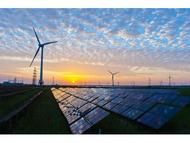Modeling Challenge - ORIGINAL CONTENT
- By:
- Edward A. Reid Jr.
- Posted On:
- Apr 26, 2022 at 7:00 AM
- Category
- Climate Change
Modeling has an uncertain reputation in climate science. However, the climate models are the purported underlying cause of the political concern regarding climate change and the “global” efforts to fundamentally change the global energy economy to avoid the “calamity” projected by the climate models.
The proposed changes to the global energy economy include the elimination of the use of fossil fuels as energy sources and their replacement with a combination of renewable energy generation and energy storage. The proposed “deep decarbonization” would shift all current fossil fuel energy end uses to electric end-use vehicles, appliances and processes. This transition would approximately quadruple the current demand and consumption of electricity in the US economy.
It would be difficult, but extremely useful, to model this transition to determine the types and quantities of renewable generators and storage systems necessary to assure a reliable electric grid which would provide the most economical electric service for this greatly expanded demand and consumption scenario.
Ideally, the model would be national in scope. It would take into account the varying availability of each type of renewable resource in each region of the country, varying regional load patterns and historical regional weather conditions. Such a model would be essential to developing a regional demonstration of a renewable plus storage grid and could be developed initially to support that demonstration and then extended to national scope.
Critical historical weather factors for this model would include solar insolation, wind intensity, duration and timing, seasonal differences in solar and wind availability and the duration of low/no solar and wind periods. This information would be used to calculate the real capacity of the renewable generators under these conditions. It would also be used to calculate the frequency, rate and duration of transfers of electricity to and from storage and the additional generating capacity required to recharge storage under these operating conditions.
The model would initially be subject to significant uncertainty regarding storage, since the long-duration storage required to respond to multi-day and seasonal variations in renewable generator output are not currently available commercially, so their cost and their performance over the expected range of operating conditions are unknown. Experience with 4-hour storage is also quite limited. The range of expected storage operating conditions will also affect the in and out losses attributable to the storage system itself and to the generator DC to storage DC voltage conversion and the storage DC to grid voltage AC inversion.
The model would also be continually subject to uncertainty regarding the rate of growth of overall energy demand and consumption in the economy, as well as the rate of conversion of fossil fuel end-uses to electric end uses and the resulting increase in electricity demand and consumption.
The generation and storage design for the proposed demonstration program would be based on the model of the demonstration zone. Analysis of the data from the proposed demonstration program would permit the model to be adjusted based on the performance of the demonstration zone infrastructure.
The development and testing of this model are far more important than the use of climate models to generate “scary scenarios” of potential future devastation.


